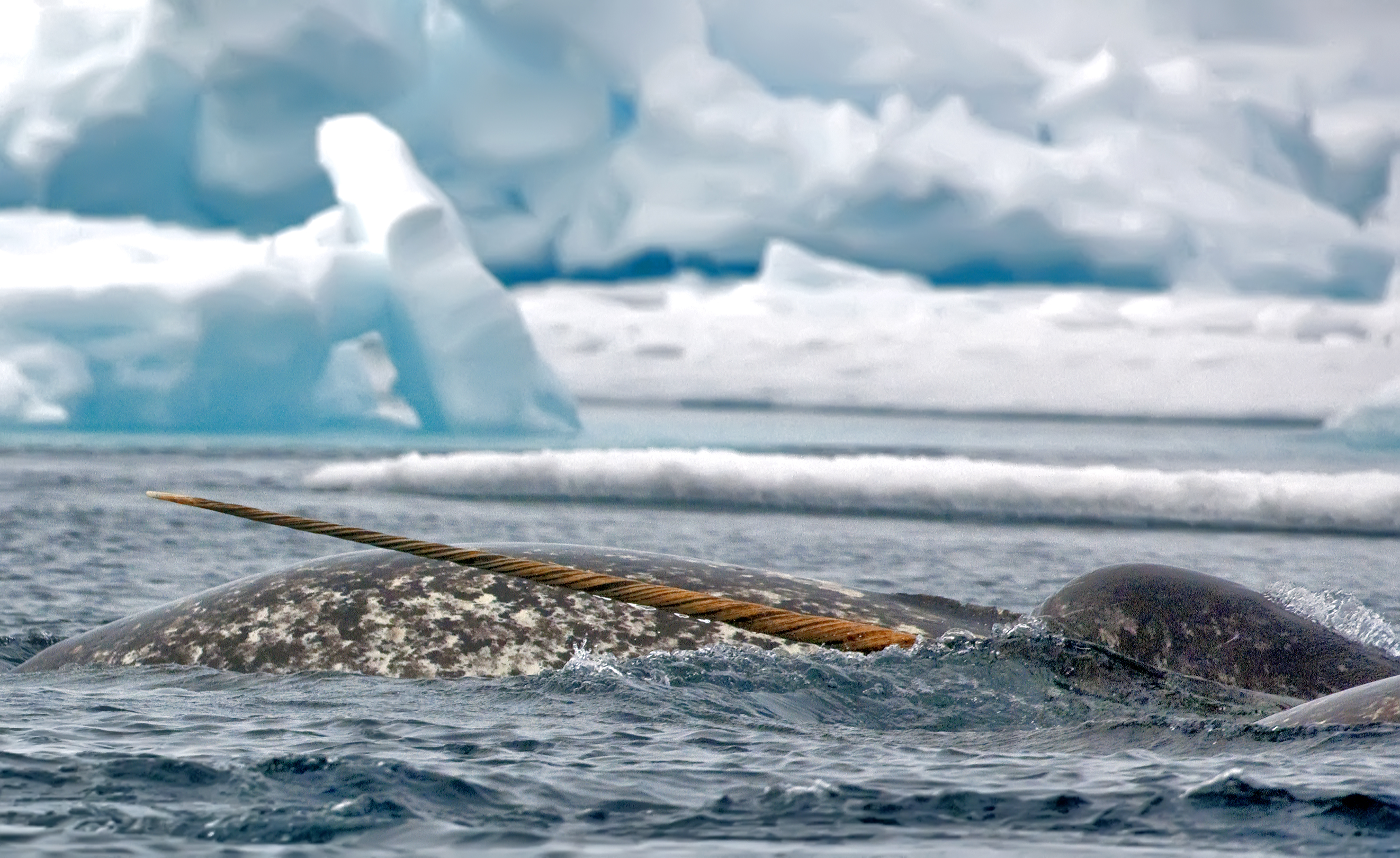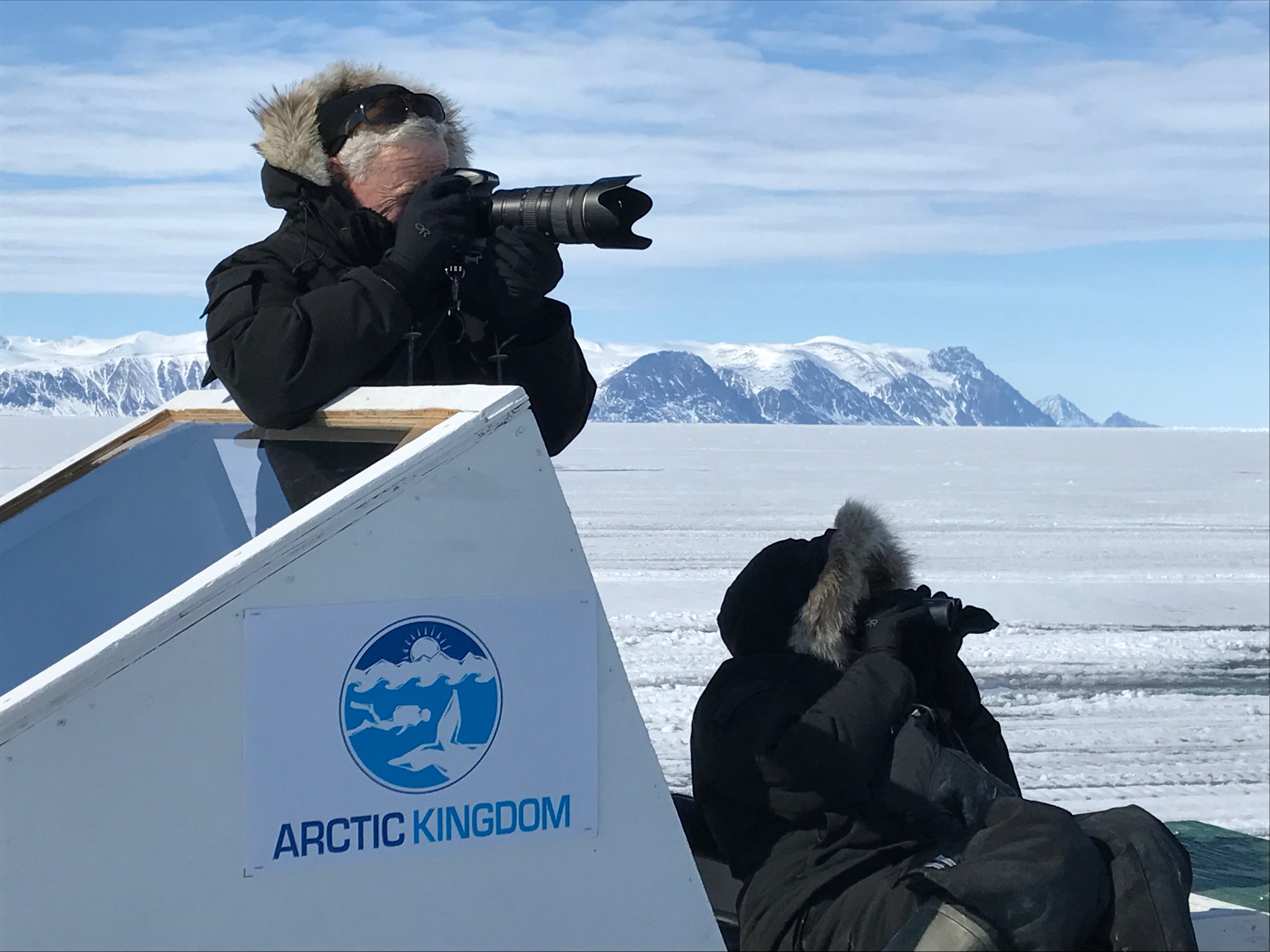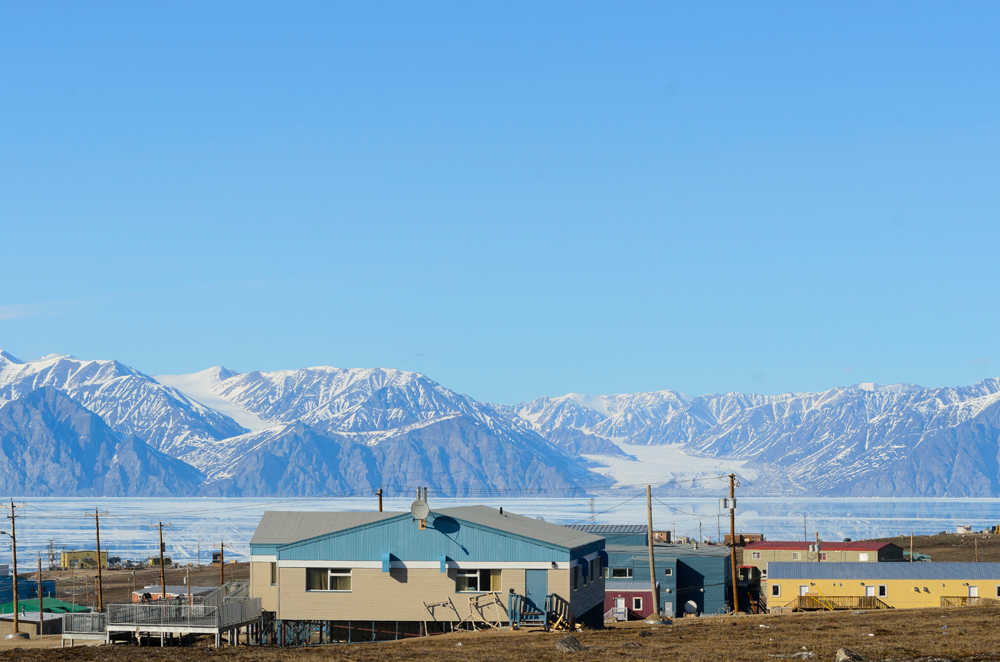The mountains are calling and so I must go!
The Arctic Cordillera Mountain Range is a canopy of shimmering ice caps, exposed dark peaks, and enormous glaciers the feed wild rivers that drain into breathtaking fiords and mountain valleys. Is it calling to you now?
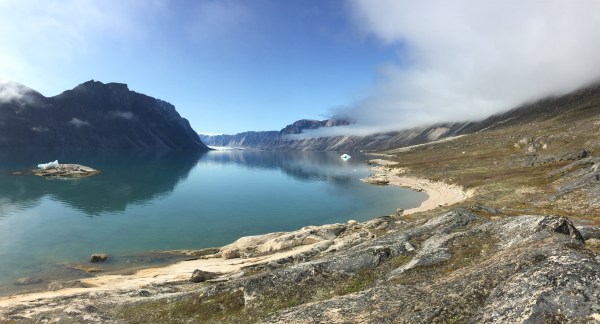
Beautiful mountain ranges have always captured the imagination and ambitions of travellers. Maybe it’s a ski trip to the Rocky Mountains or a weekend in Yosemite, people are gripped by the dramatic peaks and adventure of mountains. But how much do you really know about the Arctic Cordillera Mountain Range?
This mountain range is loaded with stunning granite and volcanic rock faces that dwarf Yosemite’s most famous peaks and wildlife that seem nearly mythical because of how few people have had the chance to witness these extraordinary creatures.
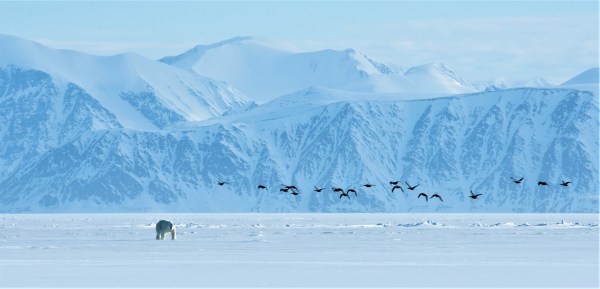
So if you have been wondering what the biggest hidden gem in the Arctic is, there’s no doubt, it’s the Arctic Cordillera Mountain Range!
About The Arctic Cordillera Range
The term ‘cordillera’ refers to an extensive chain of mountains and the Arctic Cordillera does not disappoint.
This expansive mountain range stretches from the top of Ellesmere Island, Canada’s most northern point, all the way to the Torngat Mountains of northern Labrador. It’s the only major mountain chain in Canada outside of the western ranges.
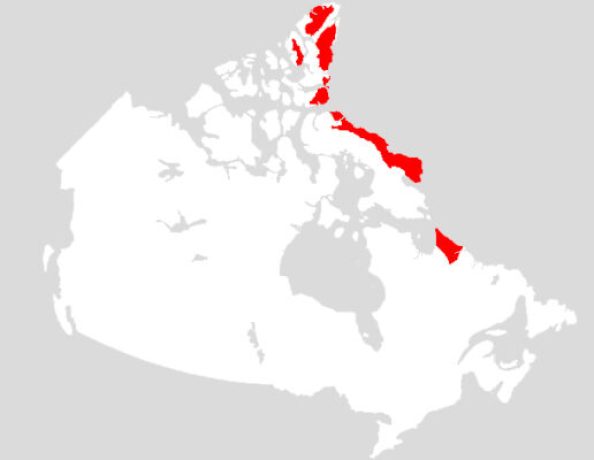
The mountains stretch along the eastern flank of Canada’s Arctic islands before it dramatically dropping off into fiords and coastline of Baffin Bay, Davis Straits, and the Labrador Sea while the northern mountains are sharply limited by the Arctic Ocean.
The highest point of the range is Barbeau Peak on Ellesmere Island at 2,616 m (8,583 ft), making it the tallest peak in eastern North America.
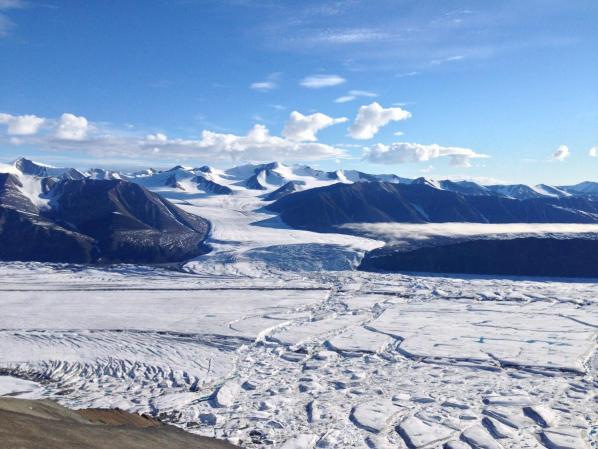
The landscape is covered with massive polar icefields, alpine glaciers, steep fiords and rocky coastlines. Yet approximately 75% of the area is exposed bedrock.
Panoramic views of stunningly shaped mountain peaks span the horizon providing evidence of the last Ice Age. The granite, volcanic, and metamorphic rock formations stand out as some of the world’s most beautiful mountain peaks.
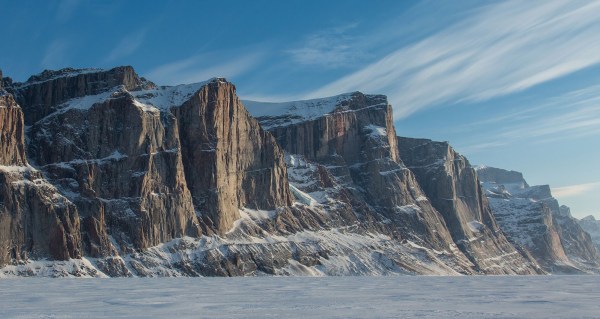
A rich white canopy of snow and glaciers blanket this prehistoric land. Deep fiords stand as a reminder of the ancient ice caps that use to cover all of this land before they carved these breathtaking mountain valleys. In fact, Barnes Ice Cap on Baffin Island is Canada’s oldest ice as a remnant of the enormous Ice Age glacier that covered and formed so much of Canada’s landscape.
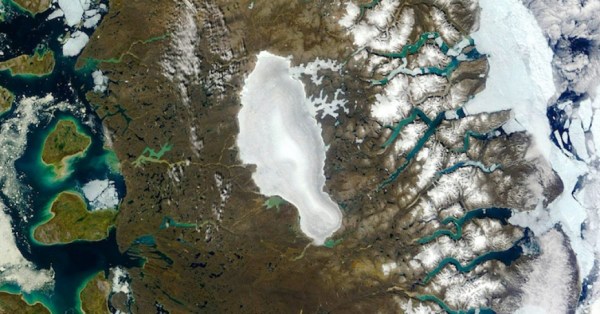
A beautiful place to explore but a hard place for vegetation to grow. But what plants you do find are remarkable and maybe even surprisingly beautiful. High elevations lack stable soil yet you find lichen and mosses clinging to exposed rock. Lower down the coastal areas support tundra vegetation like the colourful and iconic purple saxifrage and arctic poppy.
Small shrubs like arctic willow, considered the tallest vegetation above much of the tree line can be found in more southernly regions where they fight for nutrients where permafrost keeps most of the soil frozen year-round.
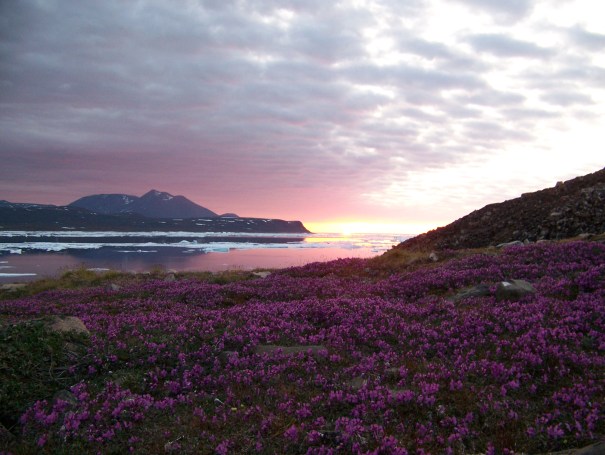
What animals can live in a place where plants struggle? The most resilient and most interesting. It is incredible the ways that polar bears have evolved to survive among the coastal hills and valleys, or the migratory birds that return each year to the Arctic because of the lack of predators they face.
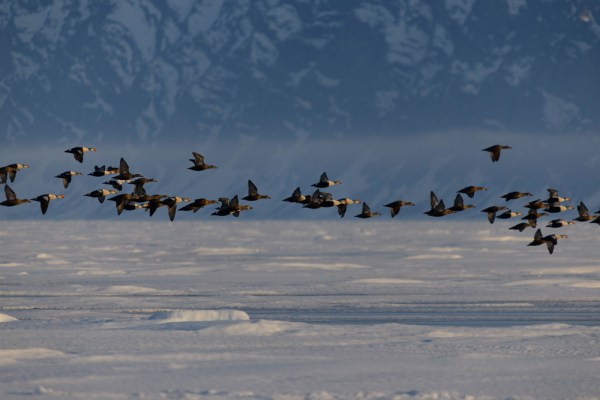
Arctic whales like narwhal, beluga, and bowhead whales rely on river estuaries and fiords to summer feeding grounds and protective nursing areas.
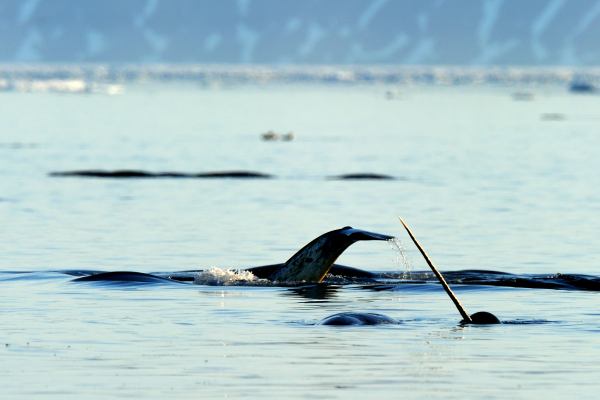
Iconic to the Arctic are the muskox herds and scores of Arctic hares that wander below the mountains to take advantage of the small vegetation that does exist. And then there’s the Arctic wolves that roam looking for prey like those very muskox or hares. There is a beautiful cycle of life in this extreme habitat.
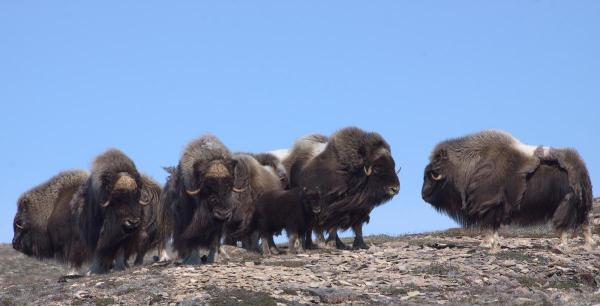
Arctic fox and caribou traverse great distances among the mountain valleys always looking for some food to forage and scavenge.
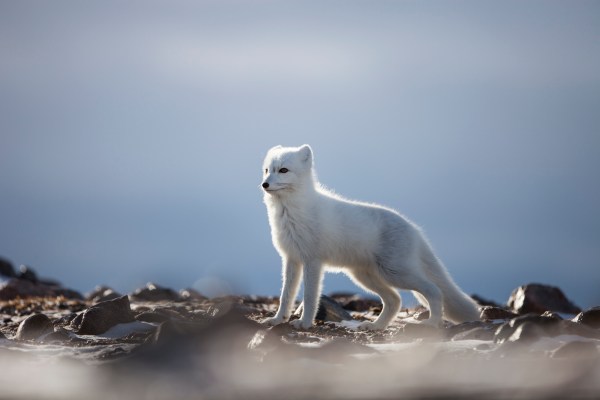
Would you have thought there were so much life and excitement among the Arctic mountains?
Four National Parks to Visit
There are three national parks spread across the Arctic Cordilleras that need to be at the top of anyone’s bucket list. These parks host some of the world’s most astonishing mountains and breathtaking rock faces. One of these mountains was even featured in a James Bond movie!
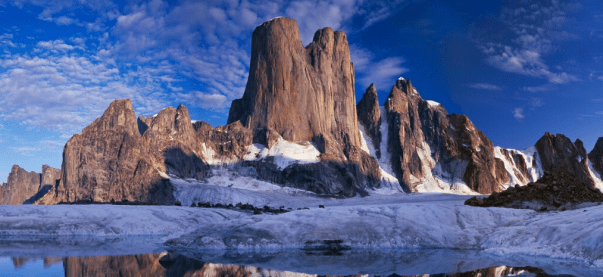
Quttinirpaaq National Park
In Inuktitut Quttinirpaaq means, “top of the world” and that’s fitting because it’s the second most northerly park on Earth. It is also Canada’s second largest park, yet only about 50 people a year visit this park. The landscape is fantastic for ski touring, hiking, and sea kayaking.
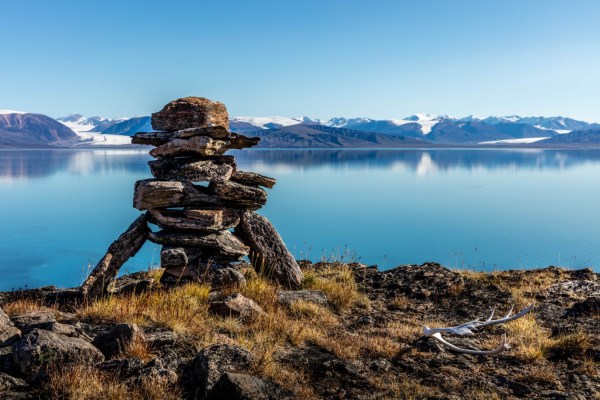
The park is only 720 km (447 mi) from the North pole and home to the towering Barbeau Peak and is dominated by ice and rock with hundreds of glaciers. Visitors may spot rare Peary caribou, herds of muskox, migratory birds, arctic wolves and hares.

(www.nationalgeographic.com)
Near the community of Alert is Lake Hazen, considered the largest lake north of the Arctic Circle. The area around this unique lake is actually considered a thermal oasis within a polar desert. Have you ever heard of such a unique ecosystem?
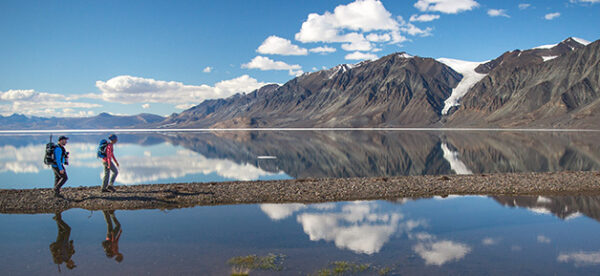
(www.pc.gc.ca)
The lake is surrounded by the Arctic Cordillera Range and fed by glaciers like Henrietta Nesmith and the Gilmour Glaciers. It truly is a stunningly remote landscape that attracts those looking for something unique and want to explore a place few have yet to visit.
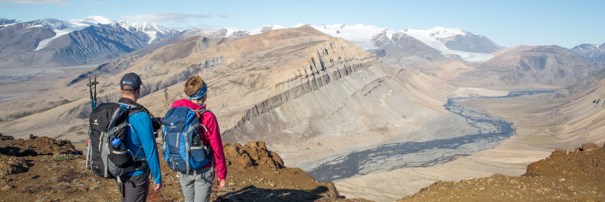
(www.pc.gc.ca)
If you are interested in visiting Quttinirpaaq, one of Arctic Kingdom’s specialties is Private Trips where you tell us where you want to go and what you want to see and we’ll help organize your trip. Beyond our regular programmed safaris, we specialize in Arctic logistics so if there is a place in the Arctic you want to visit, we can make it happen.
-If you’re interested in visiting Quttinirpaaq National Park explore our Private Trips here to start planning a trip.
Sirmilik National Park
Sirmilik meaning, “place of glaciers” in Inuktitut describes the landscape of this mountainous Arctic park perfectly. Even as you look across at the park from Pond Inlet you can see glaciers shimmering all year-round.
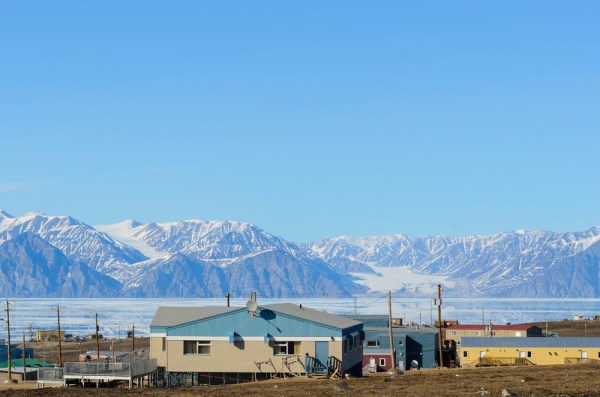
The park actually comprised of three separate locations: Oliver Sound, Borden Peninsula, and Bylot Island. And surrounding it all are two waterways that all those glaciers flow into, Lancaster Sound to the north and Eclipse Sound that separates Baffin Island from Bylot Island.
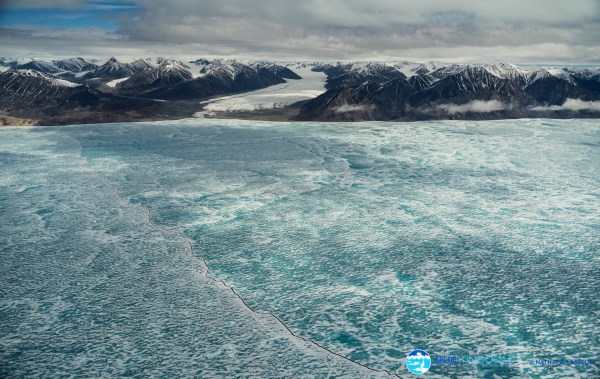
Oliver Sound is an area south of Pond Inlet that is made up of long narrow fiords surrounded by high cliffs that flow into Eclipse Sound.
Borden Peninsula is a plateau region of Baffin Island between Bylot Island and the community of Arctic Bay, known for its flat-topped red rock mountains, broad river valleys, and a number of ice caps.
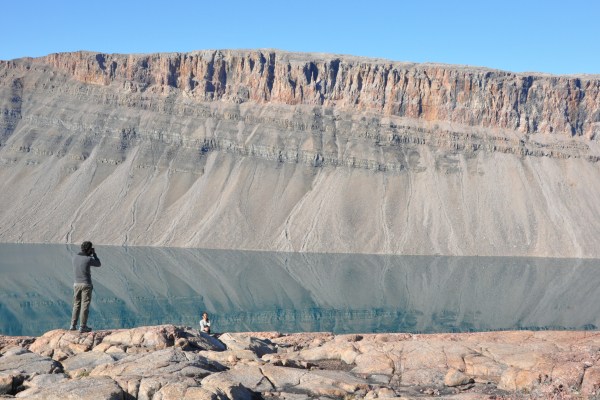
But Bylot Island stands alone as the most dramatic and beautiful example of the Arctic Cordillera Mountains. Bylot Island is a spectacular island filled entirely with rugged mountain peaks, icefields, glaciers, and red rock hoodoos carved by the wind. In fact, everything on Bylot Island seems carved by ancient natural forces. It’s clear the mountain faces were shaped by ancient ice caps as they descend to the glacier-carved valleys stretching down into the Arctic Ocean.
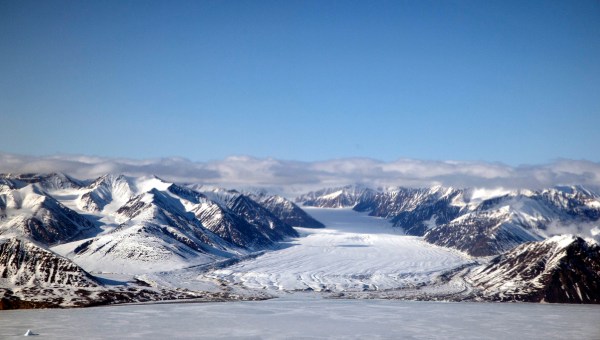
Besides the unforgettable landscapes, Sirmilik is a renowned bird sanctuary for returning migratory birds that litter the cliff faces with summer nests. In early spring you can find thousands of birds arriving from all over the world, like the Arctic Tern or Snow Geese.
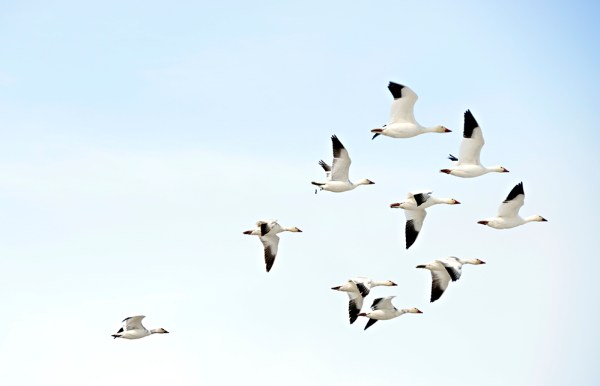
Sirmilik is also in a key location for the marine wildlife hubs that form at a floe edge, the place where sea-ice meets the open ocean. This ecosystem draws all kinds of wildlife from migrating narwhal and belugas to the polar bears that patrol the waters’ edge and the different seals that polar bears are looking to hunt. You can also find iconic animals like bowhead whales and walrus.
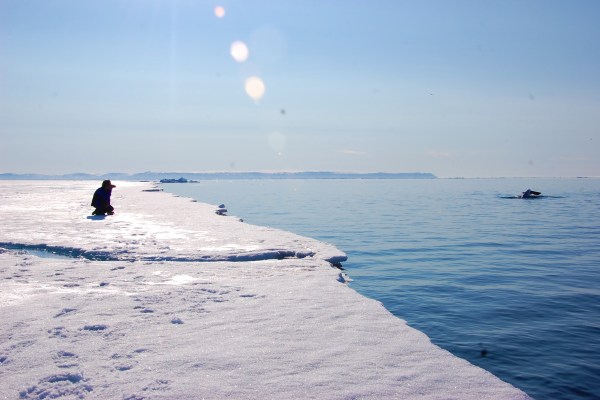
-If you’re interested in visiting Sirmilik National Park explore our Private Trips here to start planning a trip.
And our Narwhal & Polar Bear, A Floe Edge Safari takes you right to Eclipse Sound’s floe edge for amazing wildlife viewing opportunities as you take in the scenery of Bylot Island’s breathtaking mountains.
-Explore Narwhal & Polar Bear, A Floe Edge Safari here.
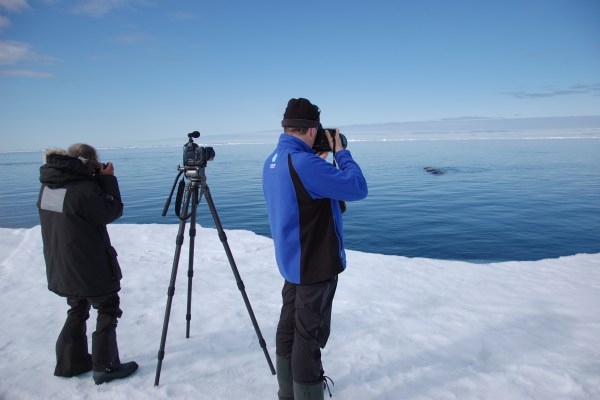
Auyuittuq National Park
The word Auyuittuq means “land that never melts” and it is impossible to think of this park without thinking of the grand mountain peaks, and Penny Ice Cap that covers more than 25% of the park.
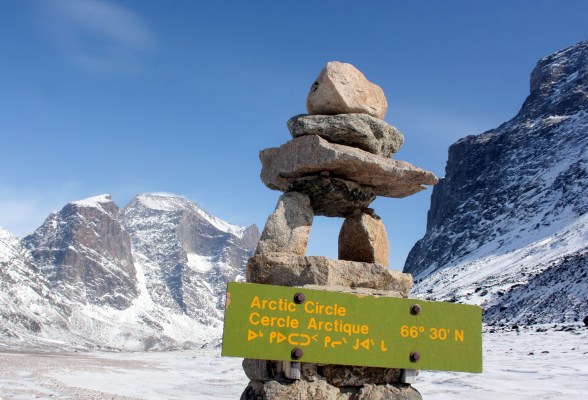
One of the most extraordinary examples of the beauty of the Arctic Cordillera Range, Auyuittuq is besieged with some of the most striking granite mountain faces. Akshayuk Pass is a corridor seemingly sculpted through the middle of the park feels like a treasure trail of the world’s most beautiful mountains.
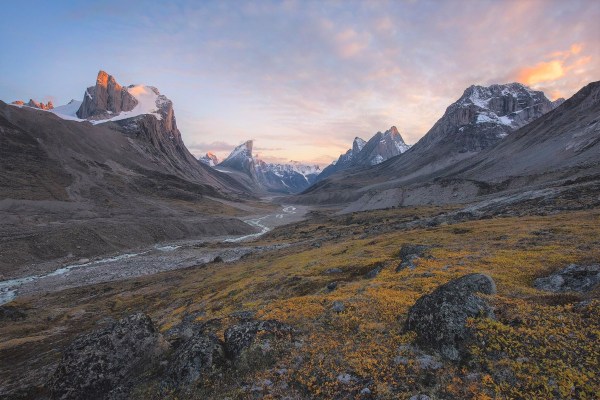
Yosemite’s most iconic peaks are dwarfed by the scale of this place. Towards the eastern entrance to the Pass is Auyuittuq’s most recognizable mountain, Thor’s Peak exceeds El Cap and it’s dramatic vertical face is more impressive than Half Dome.
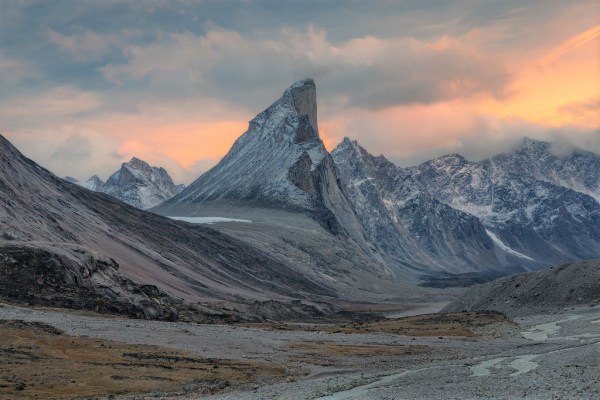
Not far from there is Mount Asgard, recognizable to movie fans for its appearance in a James Bond film. There is a scene in The Spy Who Loved Me where Bond skis off a unique flat topped cylindrical rock tower to parachute to safety, and although the movie is suppose to take place in Austria, you can guess where that scene was actually filmed. Now you can see the mountain that captured the imagination of outdoor adventures since that scene.
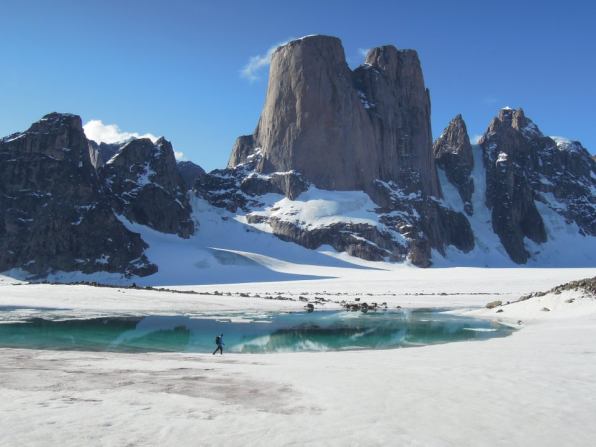
The striking granite peaks, shimmer glaciers, tundra valleys, and deep fiords is ideal for outdoor enthusiast looking to hike, ski, rock climb, hike through this breathtaking hidden gem that filled with the best of the Arctic Cordillera Mountains.
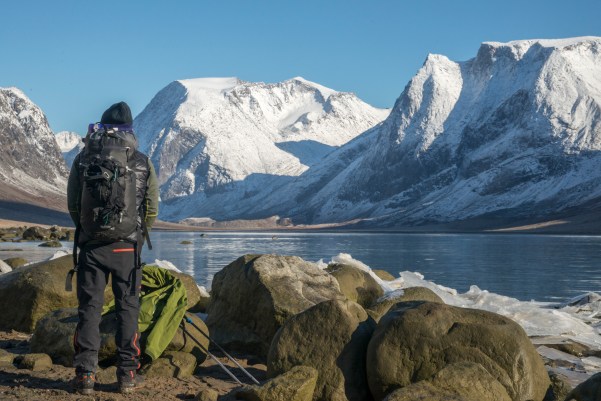
-If you’re interested in visiting Auyuittuq National Park explore our Private Trips here to start planning a trip.
-For two safaris that take you into Auyuittuq along with wildlife tours of the surrounding area, visit our Spring Polar Bears & Icebergs of Baffin Island Safari, and our Polar Bears & Glaciers of Baffin Island Safari.
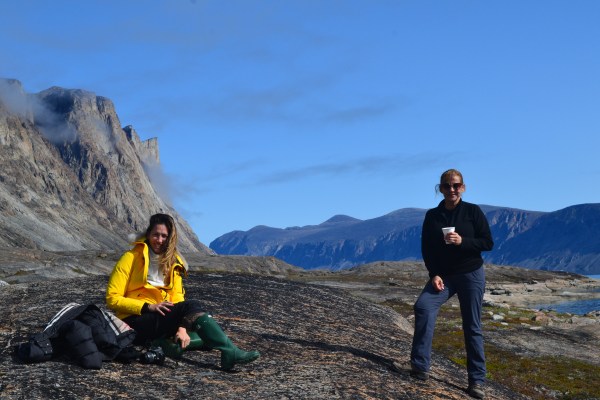
Torngat Mountains National Park
The name comes from the Inuit word Tongait meaning, “place of spirits”. It’s the largest national park in Atlantic Canada and stands as the southernmost extent of the Arctic Cordillera.
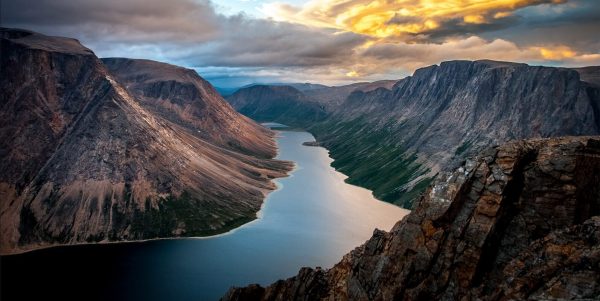
The mountains form a peninsula that separates Ungava Bay from the Atlantic Ocean and recognized by it’s jagged mountains lining deep river valleys and some of the most beautiful fiords in the world.
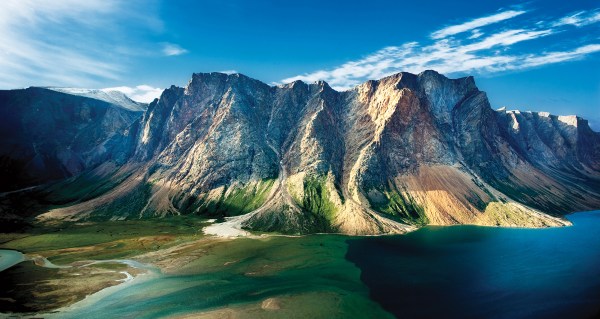
It’s tallest peak, Mount Caubvick (also known as Mont D’Iberville) reaches 1,652 m (5,420 ft) making it the highest point in eastern continental Canada.
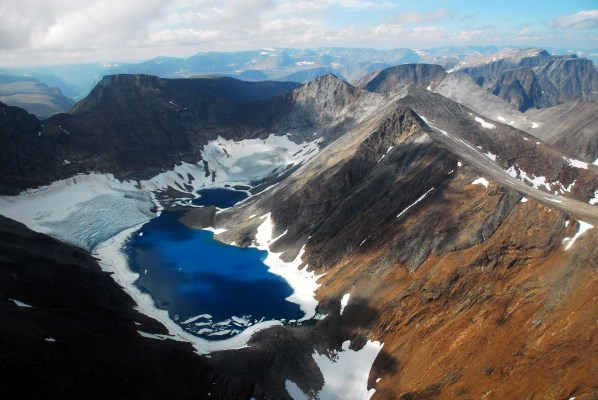
This park is perfect for hiking but a helicopter tour might just be the best way to see the grandeur of this landscape and to appreciate the size of the Torngat Mountains. Kayaking and boat tours give you the chance to explore the fiords and valleys as you look up at the towering ridges of the final chain of the Arctic Cordillera Mountains.
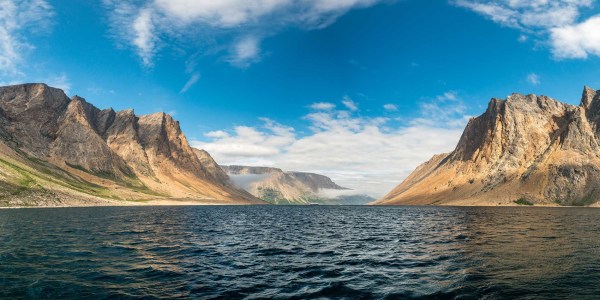
There is a wide array of truly spectacular animals that roam the park. It’s possibly the only place in the world that you can find black bears and polar bears. There are two species of foxes, there’s caribou, wolf packs, falcons, golden eagles and migrating whales making their way up the coast.
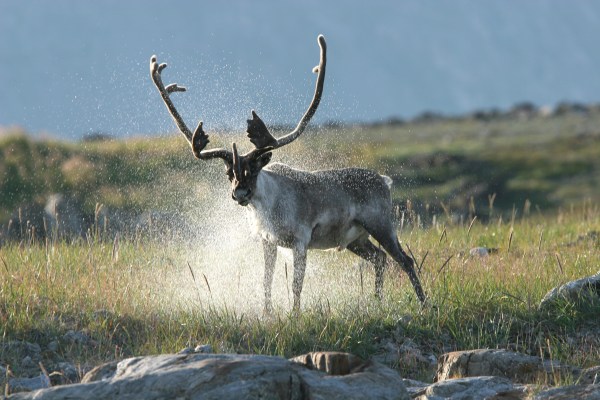
-If you’re interested in visiting Torngat Mountains National Park explore our Private Trips here to start planning a trip.
Experience The Arctic On A Safari
Get chances to view elusive Arctic wildlife and experience the majesty of the Arctic on safaris almost year-round. View all Arctic Safaris here.
Ready for adventure? Contact our Arctic Travel Advisors to book.
Are you still curious about the many wonders of the Arctic or looking for more interesting content then explore more blogs here!
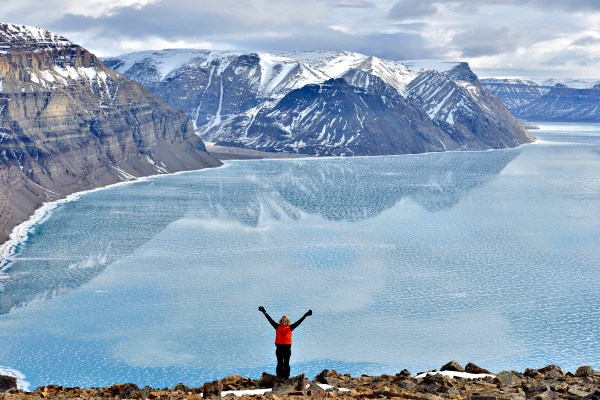
By: Mat Whitelaw


